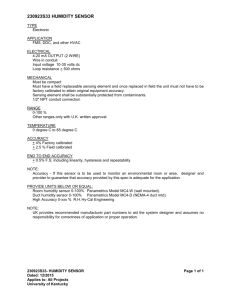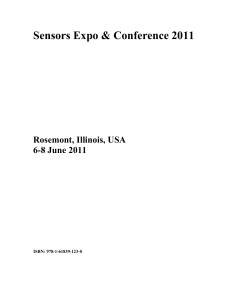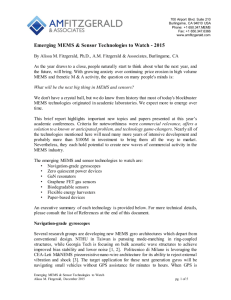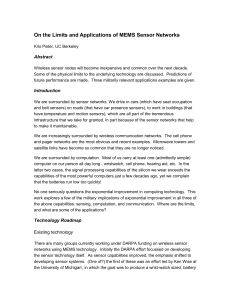Model abstract - Indian Institute of Science
advertisement
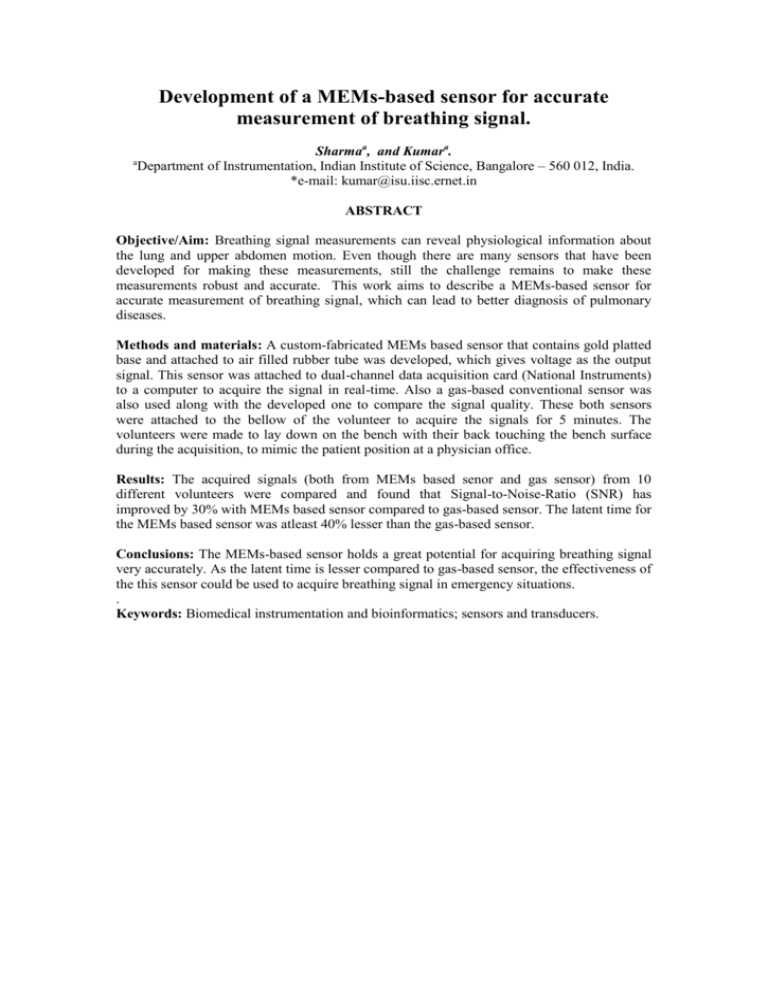
Development of a MEMs-based sensor for accurate measurement of breathing signal. Sharmaa, and Kumara. a Department of Instrumentation, Indian Institute of Science, Bangalore – 560 012, India. *e-mail: kumar@isu.iisc.ernet.in ABSTRACT Objective/Aim: Breathing signal measurements can reveal physiological information about the lung and upper abdomen motion. Even though there are many sensors that have been developed for making these measurements, still the challenge remains to make these measurements robust and accurate. This work aims to describe a MEMs-based sensor for accurate measurement of breathing signal, which can lead to better diagnosis of pulmonary diseases. Methods and materials: A custom-fabricated MEMs based sensor that contains gold platted base and attached to air filled rubber tube was developed, which gives voltage as the output signal. This sensor was attached to dual-channel data acquisition card (National Instruments) to a computer to acquire the signal in real-time. Also a gas-based conventional sensor was also used along with the developed one to compare the signal quality. These both sensors were attached to the bellow of the volunteer to acquire the signals for 5 minutes. The volunteers were made to lay down on the bench with their back touching the bench surface during the acquisition, to mimic the patient position at a physician office. Results: The acquired signals (both from MEMs based senor and gas sensor) from 10 different volunteers were compared and found that Signal-to-Noise-Ratio (SNR) has improved by 30% with MEMs based sensor compared to gas-based sensor. The latent time for the MEMs based sensor was atleast 40% lesser than the gas-based sensor. Conclusions: The MEMs-based sensor holds a great potential for acquiring breathing signal very accurately. As the latent time is lesser compared to gas-based sensor, the effectiveness of the this sensor could be used to acquire breathing signal in emergency situations. . Keywords: Biomedical instrumentation and bioinformatics; sensors and transducers.








